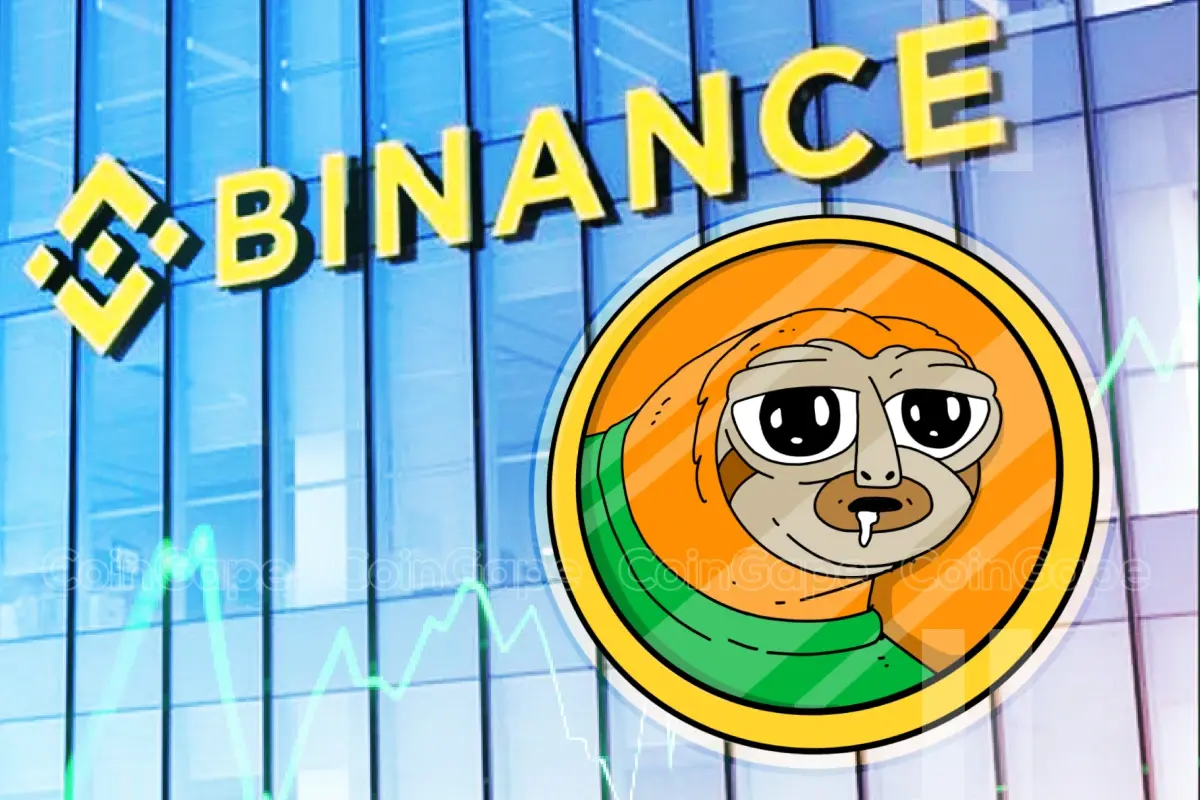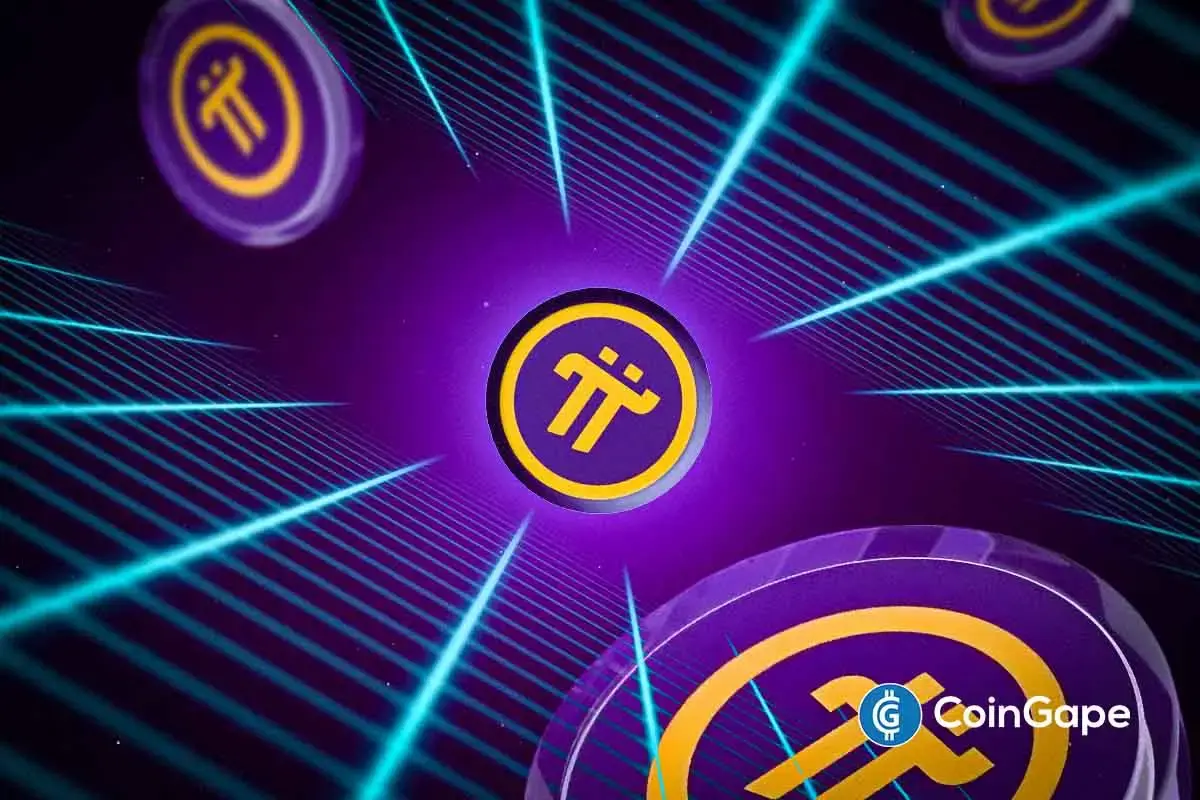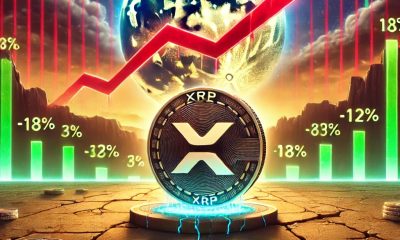Altcoin
SLERF Price Soars 55% Amid Binance’s Extended Support, Rally To Sustain?

Solana meme coin SLERF price has advanced 55% today, emerging as the talk of the crypto town on Thursday. Notably, the coin surfs bullish tides across the crypto landscape as the leading crypto exchange, Binance, unveiled a new listing for it. For context, traders also reacted positively to the listing announcement as the token’s intraday trading volume soared over 200%.
Binance Unveils SLERF Perpetual Contract Igniting Market Bullishness
In an official Binance announcement dated November 21, the crypto exchange revealed that it is launching SLERFUSDT (USD-Margined) perpetual contract today at 11:30 UTC. Intriguingly, the platform’s colossal user base remains poised to enjoy up to 75x leverage trading the asset. This has sparked a SLERF price rally recently, indicating the growing market confidence.
Further, the leading crypto exchange set the capped funding rate for the token at +2.00% / -2.00%. Also, the tick size for the crypto was 0.0001, per the announcement. Notably, the underlying asset remains the abovementioned Solana meme coin, SLERF.
On the other hand, Binance also revealed that it is launching Secret (SCRT) (USD-Margined) perpetual contract at the same date and time. This perpetual contract launch also boasts maximum leverage of 75x in an effort to magnetize investors. Overall, these enhanced offerings have set off optimistic waves for the tokens across the broader market, offering enhanced liquidity and investment opportunities to market participants.
SLERF Price Rallies
At the time of reporting, SLERF price witnessed gains worth 55% and is currently trading at $0.4373. Its intraday low and high were $0.2547 and $0.4266, respectively. The coin’s 24-hour trading volume surged 219% to $271.18 million. Notably, this rising movement falls in line with the abovementioned listing.


Further, investors anticipate more gains in the Solana meme coin’s price against the backdrop of another bullish on-chain metric. A recent CoinGape Media report revealed that SLERF whale accumulation soared remarkably, underscoring significant buying pressure for the asset.
Meanwhile, it’s also noteworthy that SCRT price witnessed gains worth 2% intraday in the wake of the listing and is trading at $0.3393. The coin’s 24-hour low and high were $0.302 and $0.3791, respectively.
Disclaimer: The presented content may include the personal opinion of the author and is subject to market condition. Do your market research before investing in cryptocurrencies. The author or the publication does not hold any responsibility for your personal financial loss.
Altcoin
Cardano Bulls Secure Most Important Signal To Drive Price Rally

The price of Cardano has managed to stay resilient as market volatility has continued to grow, riding on new signals for ADA bulls to drive growth. Cardano has remained on the horizon over the past few weeks as it locked in to retail its ranking as the 10th largest cryptocurrency.
With technical indicators showing a potential rebound, such as the golden cross metric, the question remains whether the ADA price can break out of its current consolidation.
ADA and Mission With Market Bulls
Cardano’s price was $0.6282 at the time of writing, up marginally by 0.64% in 24 hours. ADA bounced back from a low of $0.6197 to a high of $0.6340 to extend its ongoing consolidation.
Despite this close trading range, the asset’s price will likely benefit from the positive shift in Open Interest. This metric, as measured by CoinGlass data, has jumped by over 4% in the past 1 hour, a visible change in direction.
With this short-term shift, the total funds committed to ADA in the market are now pegged at 1 billion, worth over $629 million. Open Interest is a key metric that depicts the total value of contracts opened in the derivatives market. The bigger this figure in dollar terms, the more likely a trend shift is.
This current adoption boost has placed the ADA price in the spotlight. With speculation growing on whether the ADA price could hit $3 or higher levels, commitment in the derivatives market can reshape sentiment.
Cardano Price and Golden Cross Setup
Over the past 7 days, the price of the top altcoin, now capped below the $0.6677 resistance level. However, this will change if the current Golden Cross formation plays out.


Per the ADA/USDT daily chart, two major indicators are flashing unique signals that must be watched closely. The Awesome Oscillator is still reading negative, a sign that, though bears remain in control, the excessive selloff might be thinning out.
The Golden Cross, on the other hand, is on the verge of a breakout. The short-term or 9-day Moving Average is about to exceed the long-term or 21-day moving average. If this trend materializes, the Cardano price breakout will be confirmed.
With this signal, an ADA price analysis that teased $4 may be possible despite recent whale selloffs.
Cardano In the News
Amid the sustained dynamic trends in the crypto market today, ADA has remained in the spotlight over the past week.
As reported by CoinGape, the long-anticipated Cardano-Bitcoin staking is likely to become a reality soon. This is a major complement to the growing list of ADA ETF products now filed with the Securities and Exchange Commission (SEC).
If approved alongside other altcoin ETFs, it might usher in another era of institutional adoption for Cardano, setting the coin up for price breakout.
Disclaimer: The presented content may include the personal opinion of the author and is subject to market condition. Do your market research before investing in cryptocurrencies. The author or the publication does not hold any responsibility for your personal financial loss.
Altcoin
Analyst Reveals Dogecoin Price Can Reach New ATH In 55 Days If This Happens

Crypto analyst Master Kenobi has provided a bullish outlook for the Dogecoin price, predicting that it could reach a new all-time high (ATH) in 55 days. He revealed what needs to happen for DOGE to achieve this milestone by June, based on his 55-day target.
How The Dogecoin Price Could Reach A New ATH By June
In an X post, Master Kenobi stated that the Dogecoin price will likely reach a new all-time high within approximately 50 to 55 days once it breaks above the trendline he highlighted on his accompanying chart.


The chart showed that the crucial price level DOGE needs to break above, based on this trendline, is $0.15488. The analyst then remarked that a conservative price target for the top meme coin would be $0.90 by June 5-10.
Master Kenobi had made this prediction while alluding to an earlier post in which he indicated that the Dogecoin bottom was almost near. In that post, he stated that the last time DOGE experienced a downturn, there was a 100-day period from the local bottom to the local top. He noted the meme coin is now halfway through a similar timeframe.
In line with this, the crypto analyst expects the Dogecoin price to reach a new all-time high (ATH) during this period, although he admitted that it is unclear whether it will break the psychological $1 level.
Crypto analyst Kevin Capital also suggested that a massive rebound was on the horizon for the DOGE price. In an X post, he stated that everything is going according to plan for Dogecoin. He urged market participants to stay patient, noting that every day that passes is another day closer.
DOGE Traders Remain Undecided At The Moment
In an X post, crypto analyst Trader Tardigrade indicated that DOGE traders are currently undecided on the meme coin’s next move. In an X post, he stated that the Dogecoin price structure has been converging into a triangle pattern, indicating market indecision.


He noted that during this period, buyers hesitate to buy high, while sellers are cautious about selling low, leading to conservative behavior on both sides. The analyst added that this pattern typically occurs between a downtrend and an uptrend.
This market indecision currently explains why DOGE investors continue to accumulate and dump their coins at will with no clear sign of active accumulation or a wave of sell-offs. As CoinGape reported, crypto whales recently dumped 570 million DOGE, as the Dogecoin price continues to trade sideways.
Disclaimer: The presented content may include the personal opinion of the author and is subject to market condition. Do your market research before investing in cryptocurrencies. The author or the publication does not hold any responsibility for your personal financial loss.
Altcoin
Pi Coin Price Soars As Pi Network Reveals Massive Community Reward Plans.

Pi coin price went up considerably after a recent announcement outlining the project’s tokenomics and migration plan.
The news revealed that 65 billion Pi tokens have been held in reserve for community mining rewards. This fact accounts for the long-term token distribution strategy of Pi Network, an organization that has labored diligently to develop its ecosystem for more than six years.
Pi Coin Price Pumps Following Token Distribution Details
According to the latest data, the Pi coin price jumped close to 5.5% in the last 24 hours. The coin jumped from an all-time 24-hour low of $0.6098, reaching as high as $0.6599.
Pi had also been in a seven-day trading range of $0.594 to $0.774, and the latest news favored bullish price momentum. Of the 100 billion maximum token supply, 65% (65 billion tokens) is allocated specifically for community mining rewards. CoinGape has also released an analysis of how high Pi Coin can go if major banks start using it.
A Mainnet migration roadmap based on the network’s priorities is now available. https://t.co/fFqpZcgA8M
The roadmap outlines how first migrations, second migrations with referral bonuses, and ongoing migrations on a regular basis will be prioritized in that order. The blog also…
— Pi Network (@PiCoreTeam) April 18, 2025
As per the announcement, the remaining supply is divided among foundation reserves (10 billion tokens or 10%), liquidity purposes (5 billion tokens or 5%), and the Core Team (20 billion tokens or 20%).
A distinctive feature of Pi’s tokenomics is that all allocations track the pace of community migrated mining rewards. This means that as verified community members migrate to the mainnet, tokens from other allocation categories become proportionally available.
The network explained that this structure “was intentionally designed to align the interests of all parties in the network to get as many Pioneers and as many Pi onto the Mainnet as possible.”
In practical terms, this means the effective total supply at any given time can be calculated by dividing the current migrated mining rewards on the blockchain by 65%.
Mainnet migration advances with phased approach
Pi Network has mentioned a structured roadmap for migrating its community of users to the mainnet blockchain. The network highlighted that it has already successfully migrated over 12 million people. They also described this as “an achievement of scalability in the industry.”
The migration process is proceeding in distinct phases based on network priorities. Currently, Pi Network is completing initial migrations for users in the queue. This include verified base mining rewards, Security Circle rewards, lockup rewards, utility apps usage rewards, and confirmed Node rewards.
Once this first migration phase is completed, the network will focus on second migrations that will also incorporate referral mining bonuses attributable to team members who have passed KYC verification.
In addition, the final stage will involve shifting to regular, periodic migrations that will include all bonuses and rewards. CoinGape has also delved into Pi Network price analysis on whether you should sell or hold your Pi Coins.
Disclaimer: The presented content may include the personal opinion of the author and is subject to market condition. Do your market research before investing in cryptocurrencies. The author or the publication does not hold any responsibility for your personal financial loss.
-

 Altcoin18 hours ago
Altcoin18 hours agoLorenzo Protocol (BANK) Price Rallies 150% After This Binance Announcement
-

 Market17 hours ago
Market17 hours agoDespite an 18% Drop, XRP’s Exchange Supply Hits Lows—Bullish Setup Ahead?
-

 Market23 hours ago
Market23 hours agoTRUMP Meme Coin Ignores $307M Unlock, Bearish Trend Holds
-

 Market21 hours ago
Market21 hours agoBase Launches Strong, But Content Coins Draw Doubt
-

 Market14 hours ago
Market14 hours agoXRP Consolidation About To Reach A Bottom, Wave 5 Says $5.85 Is Coming
-

 Altcoin7 hours ago
Altcoin7 hours agoAnalyst Reveals Dogecoin Price Can Reach New ATH In 55 Days If This Happens
-

 Market22 hours ago
Market22 hours agoPi Network, Grayscale’s Altcoin Shake-Up
-

 Market11 hours ago
Market11 hours agoCardano (ADA) Moves Sideways, But Bullish Shift May Be Brewing


















✓ Share: